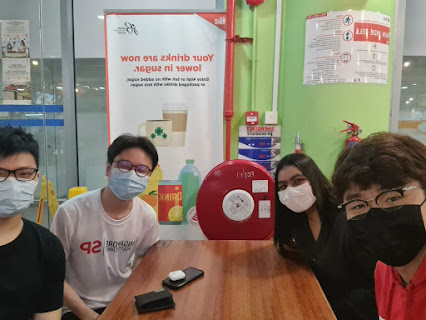Week 14
Product Sketches 🖉 & Design Specifications 📐📑
💫What happened during the lesson?
Dr Noel showed us an overview 🕔 of the module thus far which depicted what we did/learnt 🧠in the past many weeks. It showed us our progress 💪from knowing just syllabus content 😵 at the start of the module, having no idea that Chemical Engineering 👷 could be more than just Distillation.. Leaching.. Heat transfer🧪 to Product design 💡, Prototyping 📐🔧 etc. The past 14 weeks have been a rollercoaster 🎢 of learning and now we are so close to the end 💥!
💫What did we do during the lesson?
For this week's tutorial we learnt about Product Sketches 📐📏 (Part 1).
->📌 What is Product Sketching?
We learnt that it is a key technique for creative expression in product design. Not only that, it is considered the principal approach which product designers use to externalize a product’s design concepts. But most importantly, it enhances understanding and provides visual clues for possible further refinements/ revisions of the product. As sketches is a visual medium for expressing out one's idea, it will reinforce better communication between members of a team with everyone having a clear picture of the end product.
Mini activity 1 📝
Sketching
We were all given 5 sheets of A4 blank paper and were tasked to practice sketching by drawing common shapes such as lines, curves, circles, ellipses. The key was to not move our wrist. Some of our work is shown below 🌈:
Mini Activity 2 📝
One-point perspective drawing.
A one-point perspective drawing means that the drawing has a single vanishing point, usually directly opposite the viewer's eye and usually on the horizon line. All lines parallel with the viewer's line of sight recede to the horizon towards this vanishing point.
We practiced this by Sketching a milk carton:
Mini Activity 3📝
2-Point perspective drawing.
2-point Perspective Drawing is
defined by 2 vanishing points that
represent 2 convergence points and
infinite distance away. All lines drawn perpendicular or parallel to each other will converge on the vanishing point closer to its side.
We practiced this by Sketching a book:
💣Activity 1:
For this first activity, we were required to sketch our product in either 1 or 2 point perspective. We went ahead to sketch our portable food heater. The below shows the progress we had from our ideation to sketch 👯:
Front view of portable heater
Side view of portable heater
2-point Sketch of the product
💣Activity 2: Design Specifications
A specification is a set of documented requirements to be satisfied by a material, design, product, or service. It is a common preliminary part of any engineering design and product development process.
Types of specifications relevant to product design include:
-> Material specification
Physical (dimension, weight, voltage required etc)
->Functional/Performance Specifications
e.g. Acceleration from 0 to 100 km/h in 8 sec, 50m Water resistance
-> Standard Specification
e.g. API 650 for weld tank for oil storage; waterproof IP67
-> Test Standard
e.g. ASTM E18-20 Standard Test Methods for Rockwell Hardness of Metallic Materials
For us, the focus will be only on the portability and heat transfer ability of the product.
💣Our Design Specification Table:












Comments
Post a Comment